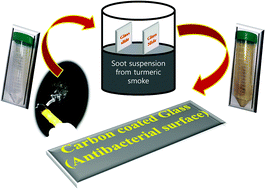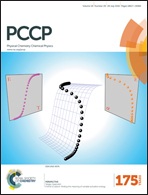Autochthonous self-assembly of nature's nanomaterials: green, parsimonious and antibacterial carbon nanofilms on glass†
Abstract
The development of thin film coatings has been a very important development in materials science for the modification of native material surface properties. Thin film coatings are enabled through the use of sophisticated instruments and technologies that demand expertise and huge initial and running costs. Nano-thin films are yet a furtherance of thin films which require more expertise and much more sophistication. In this work for the first time we present a one-pot straightforward carbon thin film coating methodology for glass substrates. There is novelty in every single aspect of the method, with the carbon used in the nanofilm being obtained from turmeric soot, the coating technique consisting of a basic immersion technique, a dip–dry method, in combination with the phytosoot-derived carbon's inherent ability to self-assemble to form a uniform and continuous stable coating. The carbon nanofilm has been characterized using field emission scanning electron microscopy (FESEM), Energy Dispersive X-ray (EDAX) analysis, a goniometer and X-ray diffraction (XRD). This study for the first time opens a new school of thought of using such naturally available free nanomaterials as eco-friendly green coatings. The amorphous porous carbon film can be coated on any hydrophilic substrate and is not substrate specific. Its added advantages of being transparent and antibacterial in spite of being green and parsimonious are meant to realize its utility as ideal choices for solar panels, medical implants and other construction applications.


 Please wait while we load your content...
Please wait while we load your content...